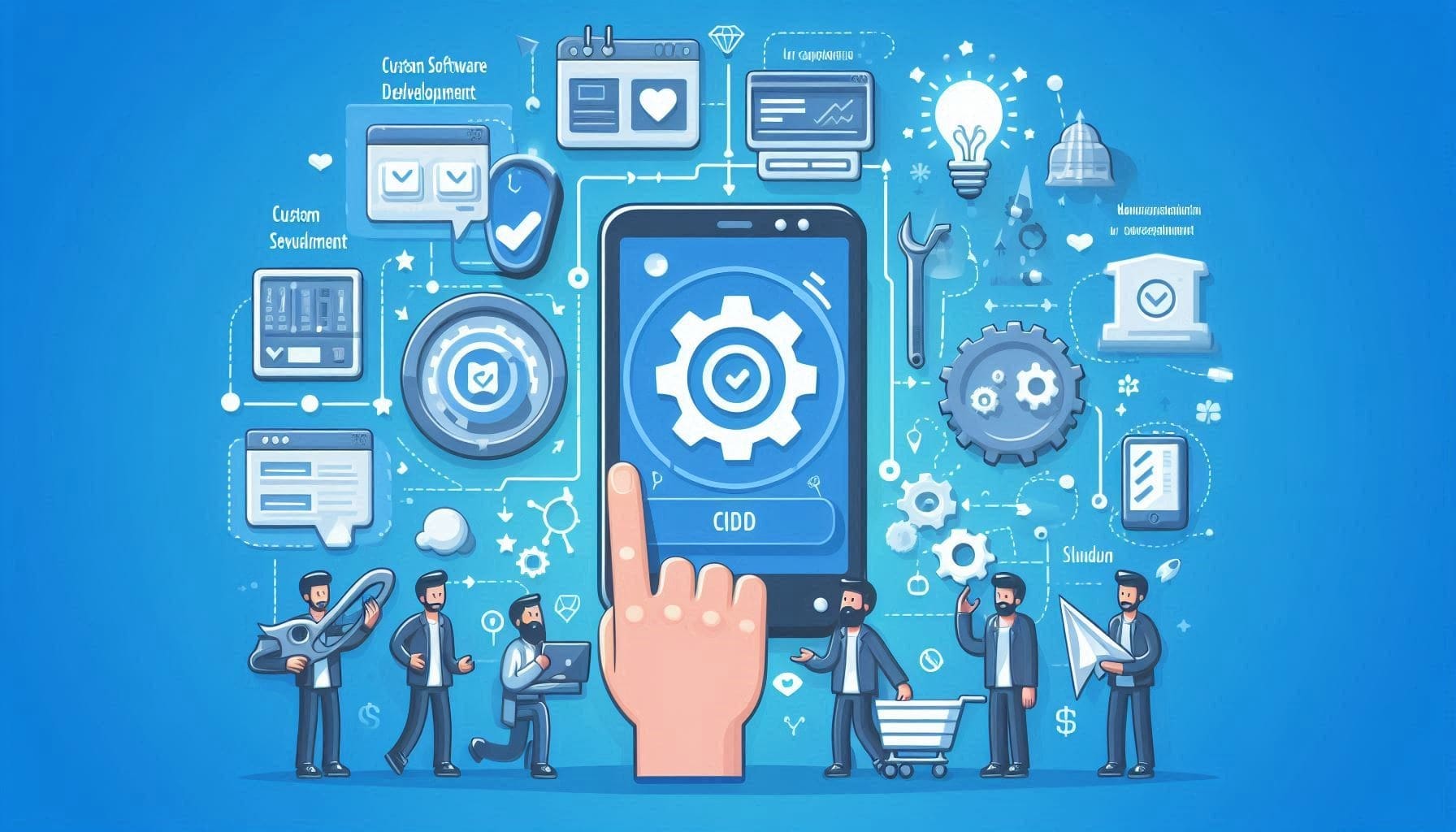Struggling with clunky systems that waste your patients’ time and frustrate your staff? If healthcare portals feel overwhelming or outdated, you’re not alone. Traditional methods of managing appointments and medical records often create bottlenecks that hinder efficient patient care and increase administrative burdens.
But what if you could simplify appointment booking, give patients instant access to their medical records dashboard, and boost engagement all in one platform? In this guide to building healthcare portals, you’ll learn exactly how to create patient portals that work for your practice — not against it. From streamlining scheduling workflows to designing intuitive dashboards, this post will help healthcare providers leverage modern portal solutions to enhance patient experience and operational efficiency.
Streamlining Appointment Booking for Patients
The integration of appointment booking features within healthcare portals has revolutionized scheduling for both providers and patients. By digitizing and automating this essential task, providers can reduce errors, improve workflow, and elevate patient satisfaction.
Benefits of Online Appointment Booking
- 24/7 Access: Patients can book appointments anytime without waiting for office hours, resulting in higher engagement.
- Reduced No-Shows: Automated reminders and easy rescheduling options minimize missed visits, protecting revenue and clinical schedules.
- Operational Efficiency: Staff can focus on higher-value tasks rather than phone-based booking and manual calendar management.
- Data Accuracy: Integration with provider calendars ensures real-time availability, preventing double bookings and scheduling conflicts.
Key Features: Real-Time Availability, Reminders, Cancellations
- Real-Time Provider Availability: Patients see up-to-date slots reflecting cancellations or adjustments. This transparency empowers prompt booking and reduces back-and-forth communication.
- Automated Reminders: Customized SMS and email reminders cut down no-shows by up to 30%, according to 2025 patient engagement studies.
- Easy Cancellations and Rescheduling: Self-service empowers patients to manage their appointments without staff assistance, creating flexibility and improving satisfaction.
Examples of Effective Appointment Booking Workflows
Consider a primary care practice using a healthcare portal that:
- Allows patients to choose their preferred provider, date, and time in just a few clicks.
- Instantly verifies insurance eligibility and appointment type, streamlining the check-in process.
- Sends automated confirmation and follow-up reminders with telehealth or in-person visit instructions.
Such workflows cut administrative overhead by 25% and improve patient retention by creating frictionless appointment experiences.
Creating an Intuitive Medical Records Dashboard
An effective healthcare portal must feature a medical records dashboard where patients can access their health data effortlessly. This dashboard serves as the primary interface to view lab results, medication history, and visit summaries — critical information fostering patient empowerment and informed decision-making.
Essential Elements: Lab Results, Medication History, Visit Summaries
- Lab Results: Display recent tests with clear indicators (e.g., normal/abnormal) and the option to download or share reports.
- Medication History: Show current prescriptions alongside dosage instructions and refill schedules, helping patients stay compliant.
- Visit Summaries: Provide concise notes from recent consultations, including follow-up steps and provider recommendations.
User Experience Considerations: Clarity, Navigation, Mobile Responsiveness
- Clarity: Use plain language and visual cues (charts, color codes) to make complex data understandable. Avoid medical jargon overload.
- Intuitive Navigation: Group information logically with a dashboard home screen that allows quick access to frequently viewed items—lab results or upcoming appointments.
- Mobile Responsiveness: Because 70%+ of patients use smartphones to manage their health, dashboards must be optimized for all screen sizes without sacrificing functionality.
Importance of HIPAA and Data Privacy
Patient data security is non-negotiable. All medical records dashboards must:
- Comply fully with HIPAA and other regional data protection laws.
- Use end-to-end encryption for data storage and transmission.
- Employ strong authentication methods such as multi-factor authentication (MFA) and biometric login where feasible.
Proactively addressing security concerns increases patient trust and reduces provider liability.
Enhancing Patient Engagement with Healthcare Portals
Healthcare portals should do more than just provide data access; they must actively engage patients to promote healthier behaviors and stronger patient-provider relationships.
Messaging Systems and Alerts
Secure messaging allows patients to communicate directly with their care team, ask questions, and receive follow-up instructions quickly. Alerts can notify patients of new lab results, prescription renewals, or upcoming checkups to keep them informed and connected.
Integration with Telehealth and Wellness Resources
Embedding telehealth capabilities within the portal simplifies virtual appointment scheduling and consultation, meeting the growing patient preference for remote care. Wellness resources, such as personalized health tracking tools, educational articles, and reminders for preventive screenings, encourage comprehensive health management.
Encouraging Regular Portal Use and Education
- Use gamification elements like achievement badges for medication adherence or appointment attendances.
- Incorporate onboarding tutorials and regular updates that highlight new portal features.
- Provide push notifications with actionable health tips to keep patients returning and engaged.
Effective engagement translates to improved outcomes as patients become more proactive, adherent, and satisfied with their care.
Future Trends and Advanced Features in Healthcare Portals
To stay ahead, healthcare providers should consider emerging technologies and trends that will redefine the next generation of patient portals by 2025.
AI-Driven Health Insights and Predictive Analytics
AI algorithms can analyze patient data patterns to deliver personalized health insights, early risk detection, and tailored care recommendations. Predictive analytics empower providers to intervene sooner, reducing hospitalizations and improving chronic disease management.
Voice Assistants and Chatbots for Portal Navigation
Conversational AI interfaces enable hands-free portal navigation and instant responses to common patient queries. This improves accessibility for elderly or disabled patients and reduces call center volumes.
Enhanced Interoperability with EHR Systems
Seamless integration with electronic health record (EHR) systems ensures that all patient data is synchronized, consistent, and accessible across platforms. This interoperability facilitates coordinated care among different providers and improves data accuracy.
Implementing these features requires strategic partnerships and robust IT infrastructure, but the payoff in patient satisfaction and operational resilience is substantial.
Conclusion
Building healthcare portals that streamline appointment booking and simplify access to medical records dashboards is essential for modern healthcare providers. These portals not only reduce administrative burden but also empower patients with the tools and information needed to take charge of their health.
WildnetEdge stands out as a trusted partner in delivering robust, user-friendly portals that improve patient engagement and operational efficiency. Their forward-thinking solutions incorporate real-time scheduling, intuitive medical records dashboards, and cutting-edge AI enhancements, tailored to meet the unique needs of your practice. Ready to upgrade your patient experience? Connect with WildnetEdge today to explore customized portal solutions designed for seamless, future-ready healthcare.
FAQs
Q1: What features should a healthcare portal include for appointment booking?
Key features include real-time provider availability, easy rescheduling or cancellations, automated reminders via SMS or email, and integration with provider calendars to reduce scheduling errors and no-shows.
Q2: How secure is the medical records dashboard in healthcare portals?
Security is paramount; dashboards comply with HIPAA regulations and employ end-to-end encryption, multi-factor authentication, and secure data storage protocols to protect patient information.
Q3: How do healthcare portals improve patient engagement?
Portals offer personalized health information, secure messaging with providers, automated appointment reminders, medication management tools, and integration with wellness resources, encouraging proactive patient participation.
Q4: Can healthcare portals integrate with telehealth platforms?
Yes, most modern portals include telehealth integration, enabling patients to schedule and manage virtual visits seamlessly within the same platform, enhancing access and convenience.
Q5: What trends are shaping the future of healthcare portals?
Emerging trends include AI-powered health insights, voice assistants and chatbots for easier navigation, enhanced interoperability with EHR systems, and mobile-first designs to meet patient expectations for convenience.

Nitin Agarwal is a veteran in custom software development. He is fascinated by how software can turn ideas into real-world solutions. With extensive experience designing scalable and efficient systems, he focuses on creating software that delivers tangible results. Nitin enjoys exploring emerging technologies, taking on challenging projects, and mentoring teams to bring ideas to life. He believes that good software is not just about code; it’s about understanding problems and creating value for users. For him, great software combines thoughtful design, clever engineering, and a clear understanding of the problems it’s meant to solve.
 sales@wildnetedge.com
sales@wildnetedge.com +1 (212) 901 8616
+1 (212) 901 8616 +1 (437) 225-7733
+1 (437) 225-7733































